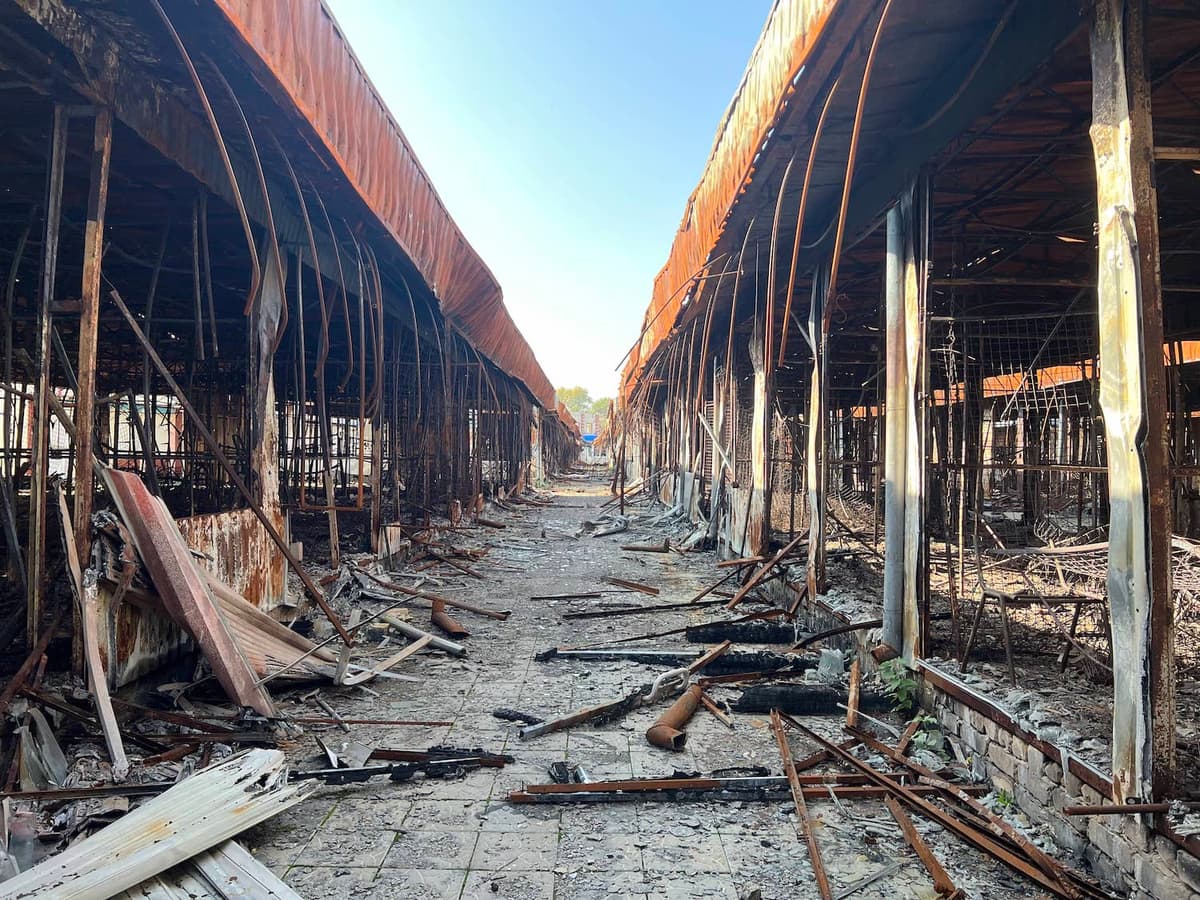Once a Busy Market Town, Ukraine’s Kupyansk Is All But Empty Now — Five Miles From Russian Guns
Nearly every building is damaged or destroyed, yet some civilians refuse to leave the place they call home. ‘It really helps to not think about what’s happening,’ one resident says.

KUPYANSK, UKRAINE— Once a busy market town for Ukrainians, Kupyansk— only five miles from Russian forces — now looks like a ghost town. Although Russian occupiers were expelled one year ago, today, nearly every building is damaged or destroyed, and about 80 percent of residents have left. Yet despite the constant Russian shelling, some civilians refuse to leave a place they call home.
The mayor of Kupyansk, Gennadiy Metesgora, surrendered the city without a fight on the third day of the full-scale invasion in February 2022. Only 25 miles west of the Russian border, Kupyansk became the capital of the occupied parts of Ukraine’s eastern region, Kharkiv. In a lightning campaign one year ago, Ukraine liberated the region.
Russia, though, is not giving up on Kupyansk. A road and rail hub, the city is key for occupying the rest of the Kharkiv region and defending the two regions of the Donbas — Donetsk and Luhansk. Moscow is fielding more than 50,000 troops to retake the city. Ukrainians live under constant shelling. The sound of explosions is their new background noise.
“We are home. How could we leave?” a Kupyansk resident, Tatiana, tells the Sun. The last name of everyone who commented in this article has been omitted for safety due to the proximity of Russian troops. Despite her friends leaving, Tatiana decided to stay, even when Moscow occupied the region.
“We were born here,” she says. “We grew up here. We live here. My parents are here. We didn’t leave when the Russians were here. We are not trying to leave now.” Tatiana speaks as air raid sirens sound across the town. She ignores them. They are part of their daily routine.
A sticker on remaining cars reads: “I am here to protect.” As strangers walk past each other, some say, “Honor to Ukraine,” while others respond, “Honor to Heroes.” During the occupation, a highway entrance sign was painted with Russian colors. After liberation, some locals returned it to its original Ukrainian blue and yellow colors. They did the same with the bridge over the Oskil River, which divides the city.
Kupyansk now boasts 11,000 people, only a fifth of the 58,000 residents who lived here before the full-scale invasion. Bombs and shells have hit most districts. The bridge over the Oskil River has been bombed by Russians. Many streets are reduced to rubble. Schools are half-standing buildings with piles of bricks around them. Markets have been destroyed by missiles, which still lie on the ground. People have lost their jobs.
Tatiana worked at a manufacturing company before the war. Now she sells candy at the market. The people who decided to stay set up an alternative street market as makeshift replacement for shops destroyed by the Russians. They want to keep the economy moving. As the frontline city has now become a hub for the military, shops cater to the troops, selling army boots and uniforms.
With no schools or employment, Tatiana says, most young people with children left the village, seeking to provide for their families. “No matter what’s happening, you have to grow, which is very hard in this situation,” Tatiana says.
Kharkiv authorities ordered residents to leave Kupyansk last month due to “constant” shelling by Russian forces. The shelling is killing five to 10 civilians in the area every week, according to the regional officials. Yet, Ukrainian legislation does not allow the government to force people out of their homes. Many residents decided to stay. They signed a release stating they would not hold officials accountable for what could happen.
Another Kupyansk resident, Victoria, says she can’t leave because her parents refuse to evacuate. “I can’t leave them,” she says. Victoria owns a small shop for groceries in the city. People with limited resources stay to protect their belongings. She is attempting to fix a coffee maker broken since a power outage two days ago.
“It really helps to not think about what’s happening,” Victoria says. “We have to adapt. Life moves on.”
The former mayor, Mr. Metesgora, made a deal with the Russians to hand over the region without a fight “to avoid casualties” at the beginning of the full-scale invasion. The main bridge crossing the city had been destroyed, but Mr. Metesgora showed the Russians an alternative route. He provided Russian troops with transportation, accommodation, fuel, and food, the head of the Kharkiv Region Military Administration, Oleh Syniehubov, announced through his Telegram channel.
Mr. Metesgora — member of a pro-Russian party called Opposition Platform for Life— is seen as a symbol of betrayal at Kupyansk. Tatiana says they felt like “aliens” in their homes during the occupation. The day after he surrendered the city, the Ukrainian government charged Mr. Metesgora in absentia with treason. Later, the Russians arrested him.
Mr. Metesgora’s actions and the footprint of Russian occupation haunt people at Kupyansk. A firefighter, Victor, says stress has been added to his job. Unexploded Russian mines lie in unexpected places. In farm fields, tractor drivers risk setting them off. Following Russian attacks, Victor’s team rushes to the scene. Yet, there’s always a risk of a double tap— a delayed second shell hitting the same place.
Even though we have to adapt, we decided to stay,” Tatiana says over the din of distant explosions. The familiar flowers and trees give her a sense of belonging. “It’s your land,” she says. “You feel comfortable. You feel confident.”

